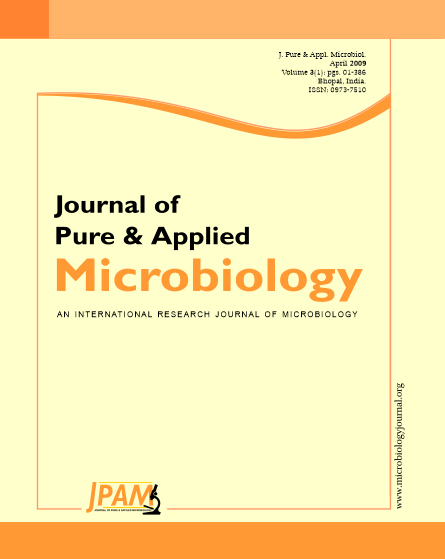Amylase is an important industrial enzyme used in various food and textile industries. Bacillus species are observed to be potential producers of various extracellular enzymes including amylase. The present investigation was carried out with an objective to find out the optimum substrate concentration, temperature, PH, effect of chemical reagents like EDTA and Mg++ ions on amylase production by B.subtillis isolated from the soil sample of the field of Central Farm, OUAT, Bhubaneswar.The amylase activity of the isolate was found to be 68.376±1.5 Huggins and Russel unit/mg protein/30-min. at 400C.The effect of substrate concentration on the enzyme activity was observed to be Km-2.85mg. and Vmax 250 HR unit/mg protein/30 minute. The optimum temperature for amylase activity was 600C.The effect of time study indicates a first order rate constant K as 8.70*10-5 sec-1 at 40 minutes. The effect of divalent cation Mg++ on amylase activity of B.subtilis as also studied and the percentage of inhibition was found to be 12.18%,36.57%,48.88% and 57.14% at 1 mM,2mM,3mM and 5 mM respectively.EDTA accelerates the rate of enzyme activity at 1mM and 2mM concentration and from 3 to 5 mM concentration, it inhibits enzyme activity. The amylase production also varies at different pH in starch agar medium. At lower pH the activity is totally inhibited and it increases gradually with increase in pH, the optimum being pH 7.0.
Amylase, Bacillus subtilis, Environmental factors
© The Author(s) 2009. Open Access. This article is distributed under the terms of the Creative Commons Attribution 4.0 International License which permits unrestricted use, sharing, distribution, and reproduction in any medium, provided you give appropriate credit to the original author(s) and the source, provide a link to the Creative Commons license, and indicate if changes were made.


